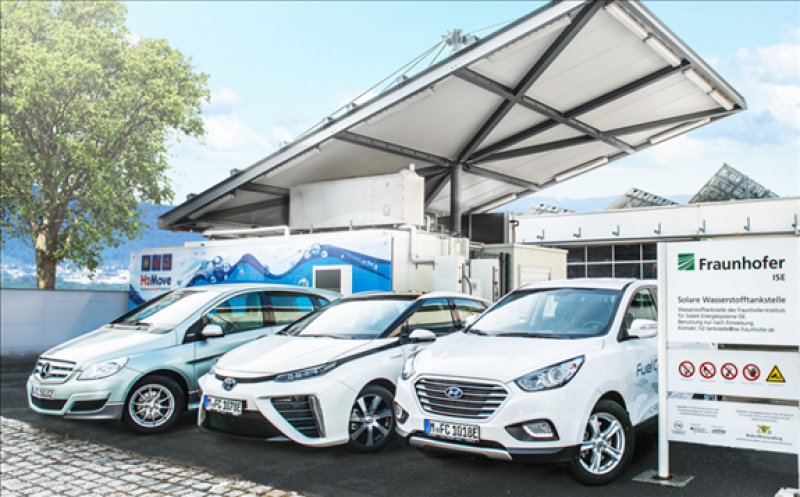
Researchers at the Fraunhofer Institute for Solar Energy Systems ISE conducted a life cycle comparison of electric and fuel cell vehicles in a study commissioned by H2 Mobility Deutschland.
The study examined greenhouse gas (GHG) emissions in the manufacture, operation and disposal of battery and fuel cell vehicles with ranges from 300 kilometers for the periods 2020-2030 and 2030-2040. Different scenarios were considered for the generation of electricity or hydrogen. The power for the battery vehicles comes at best from the photovoltaic system, while the German electricity mix represents the worst case. For the hydrogen supply, for example, the generation in an electrolysis with wind power (Best Case) and the natural gas steam reforming (worst case) were used. In addition, both technologies were compared to a car using fossil diesel fuel.
The result: at 150,000 kilometers, even in the worst case scenario, the GHG emissions of the fuel cell vehicle are below those of comparable battery vehicles (90 kWh battery), which are powered by the German power mix. Furthermore, diesel fuel vehicles have higher GHG emissions. “The study also shows that battery and fuel cell vehicles complement each other ideally. For long distances, fuel cell vehicles are more climate-friendly and for short distances battery-powered vehicles. ” Christopher Hebling, Head of Hydrogen Technologies at Fraunhofer ISE. For example, in the period 2020-2030, fuel cell vehicles will have a better GHG footprint than battery-powered vehicles with a battery capacity greater than 45 kWh.
“Beyond the study, we see further research needs, such as the use of synthetic fuels, which are produced from hydrogen from renewable energies and CO 2 , as second-life aspects or the effects on surface and water consumption,” explains project manager Dr. Ing. André Sternberg.